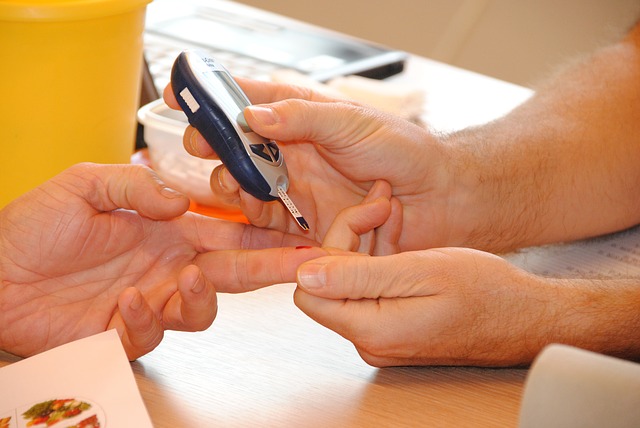Diabetic test strips are essential tools for monitoring blood glucose levels and managing diabetes effectively. However, the accuracy of these strips is crucial for ensuring that you receive reliable information about your blood sugar levels. In this blog, we’ll examine the factors that affect the accuracy of test strips and provide tips on how to ensure you get reliable results.
1. Factors Affecting the Accuracy of Test Strips
- Test Strip Quality
- Manufacturing Standards: The quality of test strips can vary between brands and batches. High-quality strips manufactured under stringent standards generally offer better accuracy.
- Expiration Date: Test strips have an expiration date after which their chemical reagents can degrade, leading to inaccurate results. Always use strips before their expiration date.
- Proper Storage
- Temperature Sensitivity: Test strips are sensitive to temperature extremes. Storing them in conditions outside the recommended temperature range can affect their performance.
- Moisture and Sunlight: Exposure to moisture and direct sunlight can degrade test strips, impacting their accuracy.
- Handling and Technique
- Clean Hands: Contaminants from dirty hands can affect the test results. Always wash and dry your hands thoroughly before handling test strips.
- Correct Blood Sample Size: Applying too much or too little blood to the test strip can lead to inaccurate readings. Follow the manufacturer’s instructions for the correct amount of blood.
- Meter Calibration
- Regular Calibration: Some glucose meters require regular calibration to ensure accuracy. Follow the manufacturer’s guidelines for calibrating your meter to maintain accurate results.
- Meter and Strip Compatibility
- Correct Strips for the Meter: Using test strips that are not compatible with your glucose meter can result in erroneous readings. Always use strips that are specifically designed for your meter.
- User Errors
- Following Instructions: Misinterpreting or not following the instructions for using test strips can lead to inaccurate results. Ensure that you understand and follow the proper testing procedures.
2. Ensuring Reliable Results
- Choose High-Quality Test Strips
- Research Brands: Select test strips from reputable brands with a history of reliability and accuracy. Check for reviews and consult your healthcare provider for recommendations.
- Verify Manufacturing Standards: Ensure that the test strips meet established quality standards and have undergone rigorous testing.
- Store Test Strips Properly
- Adhere to Storage Guidelines: Follow the storage instructions provided by the manufacturer. Keep test strips in a cool, dry place, away from direct sunlight and extreme temperatures.
- Use Original Containers: Always store test strips in their original containers with the lid tightly closed to protect them from environmental factors.
- Handle Test Strips with Care
- Maintain Cleanliness: Wash your hands before handling test strips and avoid touching the test area with your fingers.
- Use Fresh Test Strips: Always use a new test strip for each test to avoid contamination and ensure accuracy.
- Follow Meter Calibration Procedures
- Regular Checks: Regularly calibrate your glucose meter as recommended by the manufacturer. Check for any calibration errors and address them promptly.
- Professional Assistance: If you’re unsure about calibration procedures, consult the meter’s user manual or seek assistance from customer support.
- Understand Your Meter’s Error Codes
- Error Code Interpretation: Familiarize yourself with the error codes displayed by your meter and understand their meanings. Address any issues indicated by error codes to ensure accurate results.
- Regular Monitoring and Quality Control
- Test Control Solutions: Use control solutions to check the accuracy of your meter and test strips. Follow the manufacturer’s instructions for performing control tests.
- Review Results Regularly: Regularly review and compare your test results with your healthcare provider’s recommendations to identify any inconsistencies.
Understanding the accuracy of diabetic test strips and the factors that affect it is crucial for effective diabetes management. By selecting high-quality test strips, storing and handling them properly, following meter calibration procedures, and addressing user errors, you can ensure that you receive reliable and accurate blood glucose readings.
Maintaining accuracy in your testing routine helps you make informed decisions about your diabetes management and supports your overall health. If you have any concerns about the accuracy of your test strips or glucose meter, consult with your healthcare provider or the manufacturer for guidance and support.
We Buy Unused Diabetic Test Strips and Supplies
If you would like to find out about earning cash for your unwanted, unused, and boxed test strips, complete our online quote form today.
If you have extra, unopened and unused boxes of diabetic test strips – whether you have switched brands, no longer need to test or test less frequently, or have a loved one who has passed away – don’t let them gather dust until they’ve expired and end up in the trash. We’re the best place to sell diabetic test strips online, and if you want to sell your test strips, we’re here to make the process easy and enjoyable!
Visit us at Sell Your Test Strips and get your free quote today!

